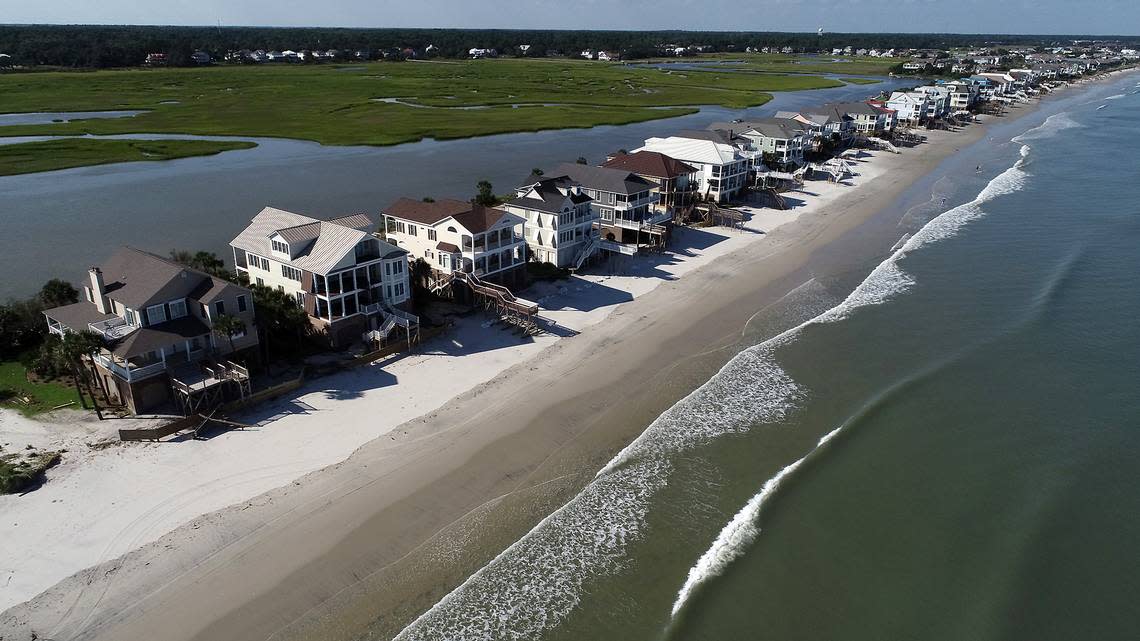About to sell a home in SC? You now have to disclose more information about water problems

With climate change creating more threats for waterfront residents, home sellers now must provide more transparency about flooding and other threats, particularly about beachfront homes.
State law already mandated home sellers fill out a residential property disclosure form, which in part is intended to warn the purchaser of any prior or current issues with the property or home. Environmentalists have pointed out for over a decade that the form did not require many details about erosion effects and flooding.
In February, the South Carolina Real Estate Commission, which must approve any changes to the disclosure form, passed updates to the form that require coastal hazards and flooding threats to be identified. On June 1, the new disclosure form went into effect.
The updates are “significant,” especially as high hazard areas experience rapid changes because of climate change, said Emily Cedzo, a senior program director at the Coastal Conservation League. High hazard areas can be properties on the coastline, along rivers or lakes, and areas throughout the state prone to flooding.
“It’s imperative that this critical information-sharing happens,” Cedzo said. “The disclosure process is a great way to make it happen on the front-end so that folks walk into these transactions with eyes wide open.”
Prior to the recent changes, the forms asked a single question about erosion and two pertaining to flooding.
But because the form did not require details of how the property may have been affected by erosion, many home buyers did not fully understand the dynamics of beachfront living and associated risks, environmentalists said.
Nick Kremydas, South Carolina Realtors’ chief executive officer, said the revised statement “strikes a great balance between increasing consumer awareness while also protecting existing homeowner rights.”
Erosion disclosure
At Litchfield Beach’s southernmost tip — called The Peninsula — a row of raised homes dot a narrow strip of beach facing the Atlantic Ocean’s lapping waters.
But the million dollar views come with a price: beach renourishment.
An $8.3 million renourishment project done in 2022 did not qualify for state or federal funding because the community is private. Money to fix the rapidly eroding shoreline came from homeowners’ pockets. It came with a price tag of “somewhere around $300,000 a piece” for the renourishment project, according to previous reporting by The State.
The cost caused some homeowners to sell their properties, worried about another potential renourishment project in the future.
Now, under the updated disclosure form, if The Peninsula was assessed for renourishment during the seller’s ownership, that seller must alert the home buyer. Previously, there was no mention of renourishment on the form.
The form also requires more robust information about erosion control structures — such as seawalls, rock revetment bulkheads or sandbags — including descriptions, locations and sizes of the structures. The old form simply asked whether “erosion or erosion control” had affected the property.
“With the clarifying language and clearer questions, sellers can be more certain that they have properly disclosed the necessary information related to their properties for buyers to make informed decisions,” said William A. “Andy” Lee, chair of the South Carolina Real Estate Commission.
The updated disclosure form would have addressed an allegation Debordieu homeowners Rodney and Felicia Cain made in a November 2021 lawsuit.
The Cains said that two years after purchasing the $2.1 million property in Debordieu, a private community in Georgetown, they discovered sandbags had been buried to offset “significant erosion,’ according to previous reporting by The State.
Sandbags were placed by the prior owners and buried, which hid the extent of the erosion, the Cains asserted. Over time, as storms surged and tides washed away sand, hundreds of the bags began washing away.
The Cains want the former homeowners to compensate them for failing to disclose the hidden sandbags and the extent of beach erosion, according to the suit. Because of what the Cains say were undisclosed problems, they have endured “major expenses” to protect the house, and the property value has decreased, the lawsuit states.
Flood history
In addition to asking if flood hazards, wetlands, or flood zones have affected the seller’s property and whether flood insurance covers it, the disclosure takes a more finite approach.
Now, sellers must disclose the following:
▪ Whether the property is currently insured through public or private flood insurance
▪ If private or public flood insurance claims have been filed on the property during the seller’s ownership
▪ Were repairs made to the property as a result of flooding that were not filed with private or public insurance during the seller’s ownership
▪ Has federal flood disaster assistance been received during the seller’s ownership
Moving forward
Jenny Brennan, science and policy analyst for the Southern Environmental Law Center, called the changes common sense measures that will make the state more resilient.
As South Carolina’s population grows, development rises. Increased development, particularly along the coast, can make areas more flood prone and worsen beach erosion.
According to the South Carolina Environmental Law Project, nearly 210,000 South Carolinians are living in 900 square miles of flood-prone areas.
During the next 30 years, sea level rise will create a big shift in coastal flooding as it results in tides and storm surges moving more inland, according to previous reporting by The State. A National Oceanic and Atmospheric Administration report noted that moderate flooding will occur more frequently, and sea levels will increase by up to 3 feet in the next 50 years.
The commission’s updating of the real estate disclosure form is another step forward in preparing for future conditions driven by climate change that impact home buyers and sellers.
“This is huge,” Cedzo said. “I really can’t understate that or overstate it.”

